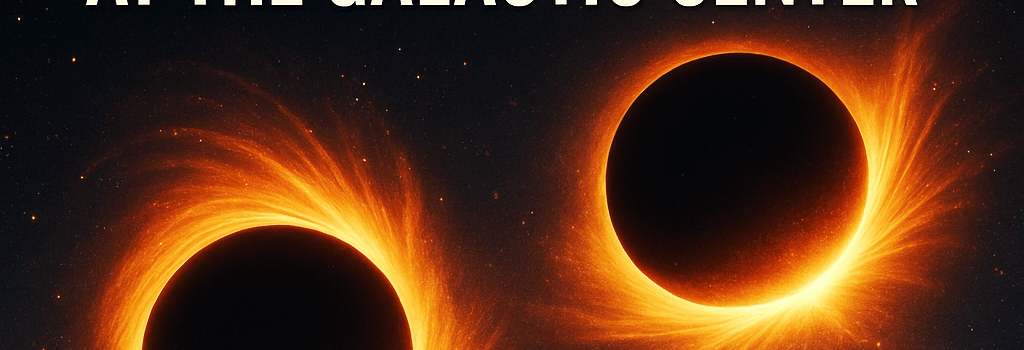Dark Stars: Matter Annihilations at the Galactic Center

For decades, stellar evolution models have relied on hydrogen fusion as the sole internal power source defining a star’s position on the Hertzsprung–Russell diagram. Recent theoretical work, however, suggests that in the extreme environment near Sagittarius A*, dark matter (DM) annihilations could supply an additional—and sometimes dominant—energy source. Under the right conditions, this could create a “dark main sequence,” producing stars that appear eternally young.
Revisiting the Main Sequence
The classical main sequence correlates a star’s mass, luminosity, radius and surface temperature, under the assumption that gravitational compression powers nuclear fusion of H → He. A star’s initial mass determines its core temperature (Tc), fusion rate, and its evolutionary path through subgiant and giant phases. Deviations from this track normally arise only when hydrogen is depleted or exotic physics (e.g. rotation, strong magnetic fields) intervene.
Dark Annihilation as an Energy Source
Hypothetical weakly interacting massive particles (WIMPs) and their antiparticles could annihilate when captured in stellar cores. If the product of the WIMP–nucleon scattering cross-section (σχn) and local DM density (ρχ) is high enough, the annihilation luminosity (Lχ) can rival or exceed fusion luminosity (Lfusion).
“In regions where ρχ ≳ 109 GeV/cm³ and σv ≃ 3×10−26 cm³/s, the annihilation luminosity reaches 1036–1038 erg/s,” notes Dr. Rebecca Leane of the University of Chicago.
- Capture Rate (Cχ): Cχ ≈ (3/2) (ρχ/mχ)σχnvesc2/vrms, with vesc ≃ 600 km/s near Sgr A*.
- Annihilation Equilibrium: Achieved when Cχ = 2Γann, Γann ∝ σv Nχ2/Vcore.
- DM Profile: Simulations use a Navarro–Frenk–White (NFW) spike or adiabatic spike with inner slope γ ≳ 2.25.
Modeling Dark Capture and Annihilation Rates
Using the MESA stellar evolution code, Isabelle John, Rebecca Leane and Tim Linden simulated stars from 1 M⊙ to 20 M⊙ in 0.05 M⊙ increments. They injected a constant Lχ as a supplemental heat source and evolved models over 10–15 Gyr. The simulations assume WIMP masses mχ = 10–100 GeV, scattering cross-sections σχn = 10−47–10−43 cm², and a Maxwellian velocity dispersion vrms=270 km/s.
Achieving Stellar Immortality
Traditionally, a star reconciles pressure and gravity via a temperature-sensitive fusion rate: εfusion ∝ ρTc4. Dark annihilation adds a density-independent term εχ, leading to several outcomes:
- Low-mass stars (< 1.5 M⊙): Core temperatures drop below the p–p chain threshold (Tc~4×106K), shutting off fusion; the star inflates but remains gravitationally bound.
- Intermediate-mass stars (2–5 M⊙): Fusion continues at a reduced rate; evolution along the main sequence slows dramatically, yielding lifetimes ≳ 15 Gyr.
- High-mass stars (> 10 M⊙): Remain dense enough for robust CNO cycling, but enhanced luminosity still extends main sequence lifetimes by factors of 5–10.
“Our models show stars with 2–5 M⊙ barely evolve in 15 billion years when Lχ/Lfusion>1,” says Dr. John.
Observational Prospects and Future Telescopes
Upcoming instruments can test these predictions by measuring the properties of S-stars orbiting Sgr A*:
- GRAVITY+ on the VLTI: Astrometry to ≲10 μas to constrain orbital distances and infer local DM density.
- James Webb Space Telescope (NIRSpec): High-resolution IR spectroscopy (R~2700) to detect anomalous surface abundances and lower effective temperatures.
- Extremely Large Telescope (HIRES): Elemental abundance measurements to ≲0.1 dex precision, revealing suppressed CNO byproducts.
Implications for Dark Matter Particle Physics
If confirmed, dark main sequence stars provide indirect detection avenues:
- Cross-section constraints: σχn ≳ 10−47 cm² for mχ~10 GeV.
- DM models: Supports WIMP or asymmetric DM scenarios with efficient capture but suppressed self-interactions.
- Density spike: Requires a steep inner profile (γ>2.25), testable via stellar kinematics.
“Stellar observables near Sgr A* could rival direct-detection limits in probing parameter space,” suggests Prof. Tim Linden.
Future Directions
To refine the dark main sequence paradigm, researchers plan to:
- Implement time-varying DM luminosity inputs along real S-star orbital trajectories.
- Incorporate 3D hydrodynamic effects and rotation in next-generation MESA runs.
- Coordinate multiwavelength campaigns combining JWST, ELT and upcoming LISA constraints on the central potential.
These advances will clarify whether dark annihilation truly sculpts a hidden stellar population at our galaxy’s heart.